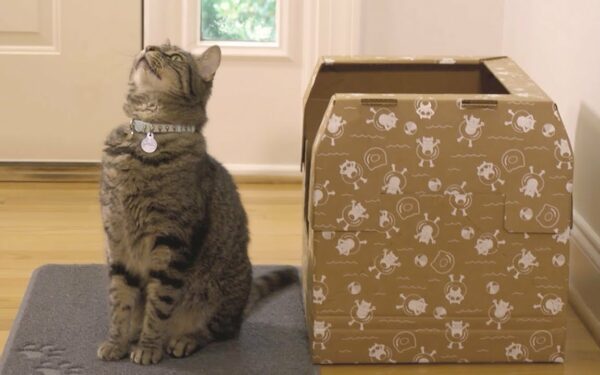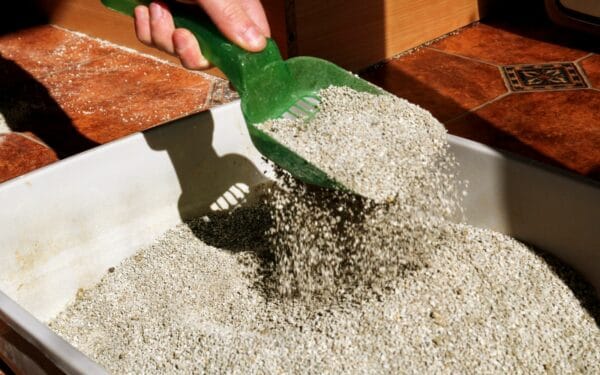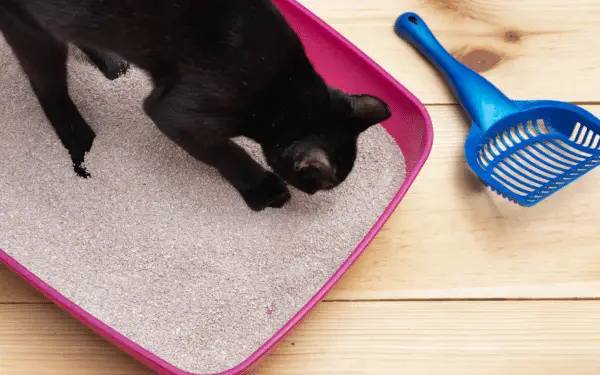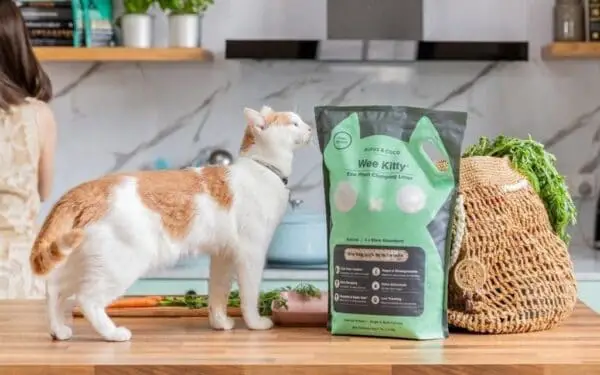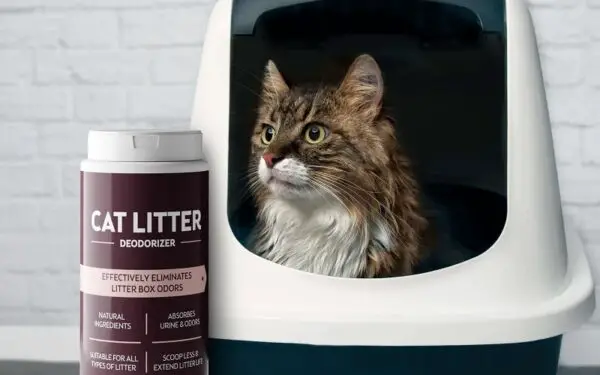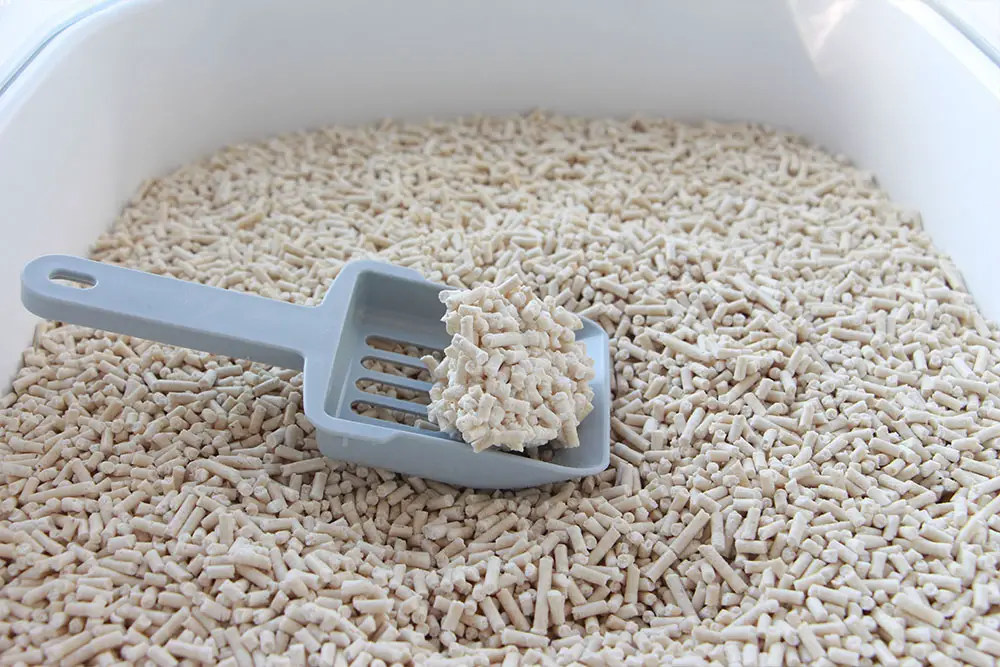
Cat Litter
Since litter is likely one of your biggest recurring expenses as a cat owner, you’d be smart to search for a good litter product at a reasonable price. There are many types of litter available for purchase, each with its own set of pros and cons.

Litter box training – The complete guide
Litter box training is an essential part of owning a cat. It involves teaching your cat to use a designated area for their waste instead […]
Litter Types
How do you pick the right type of litter? With so many options, it can prove difficult to understand the difference between various types. Take a look at this quick overview of the most common litter products, along with their main advantages and drawbacks:
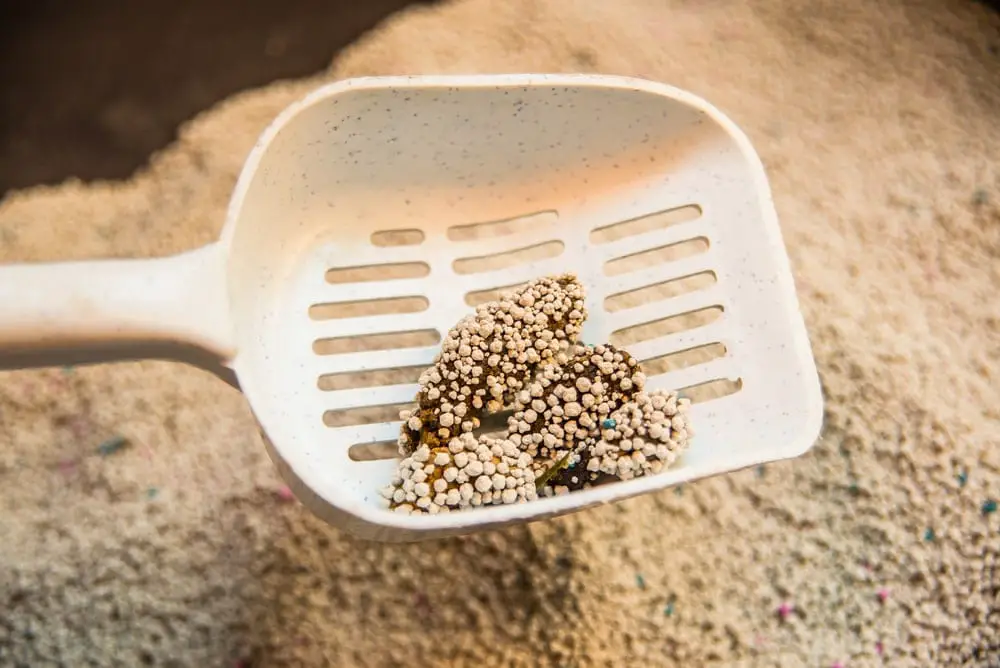
Clumping Clay (Bentonite) Litter
Clumping clay is a product that is made from a type of clay called bentonite. This material is extremely absorbent, and it has the unique property of forming solid clumps whenever it comes into contact with liquid. This makes clumping clay litter super easy to scoop.
Pros and Cons:
This type of litter is easy to come by, relatively cheap, and extremely effective at trapping smells. A major downside to bentonite is that it’s not suited for kittens, as the particles stick to their paws. The stickiness also presents another problem in the form of tracking over your floors. Finally, clumping clay litter has to be scooped relatively often.

Tofu litter
This natural product is made from bean curds and therefore completely biodegradable. It has great absorption and clumping properties, making it a popular choice among those who are more aware of the environmental impact of litter production.
Pros and cons:
Major benefits are the fact that it can be recycled, is not super dusty, and doesn’t track nearly as much as some other litters, which is definitely a big plus for people who don’t like to spend a lot of time cleaning up after their cats. One thing to consider is that tofu cat litter is more expensive compared to bentonite and silica-based litters. But in our experience, it lasts longer, so you’re still getting great value for your money.
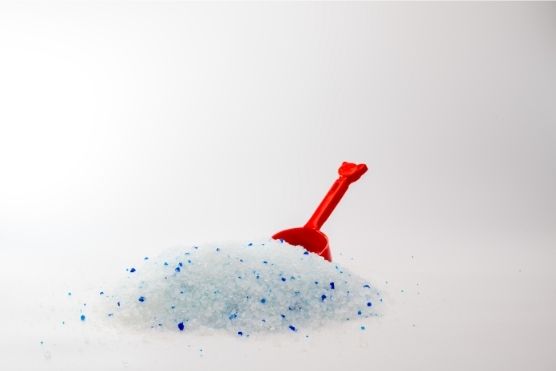
Silica
This litter product is made from sodium silicate sand. This is a type of crystal that looks like solid chunks from the outside, but actually contains a fine network of hollow channels on the inside. These channels make the crystals extremely porous, enabling them to absorb up to 40 times their own weight! Once the moisture is absorbed, it will slowly evaporate, leaving all the stinky stuff behind inside the hollow channels.
Pros and cons:
Silica is relatively expensive and needs to be maintained through daily stirring, but the porous channel structure is incredibly effective at odor control and makes silica-based litters extremely absorbent. There are some concerns about silica being linked to upper respiratory problems in animals.
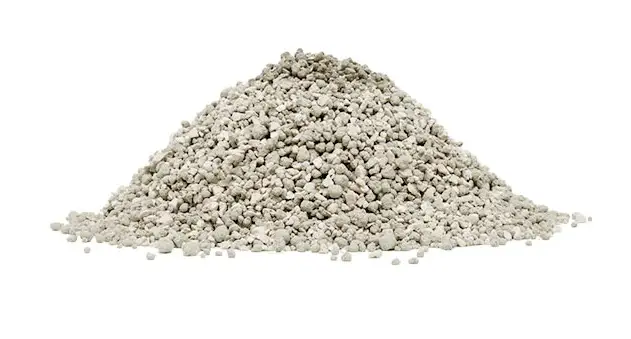
Diatomite
Diatomite is a special type of non-clumping cat litter that is made by crushing up fossils of marine life called diatoms, which earns this litter its name. The resulting minerals absorb liquids quickly and lock in any odor they carry. Diamote can absorb about 1.5 times its own weight, so its absorbent properties are a bit better than clumping clay.
Pros and cons:
Scooping diatomite is a little more involved because it doesn’t clump. On the upside, this product does a great job at odor control, is a 100% natural and eco-friendly product that is hypoallergenic, and does not track nearly as much as the more sticky forms of litter like bentonite/clumping clay.
Frequently asked questions
While scented litter smells great and helps mask some of the odor, some cats are very sensitive to it because scented products contain perfumes. The only way to find out what your cat can tolerate is by trying both.
Frequent scooping and thorough cleaning of the litter box will help keep foul smells to a minimum. Buy a litter product with maximum odor control. If you find that your litter becomes stinky too fast, a litter deodorizer product can help reduce the odors coming from the litter box.
Recommended: Read this article for more tips on dealing with stinky litter boxes.

